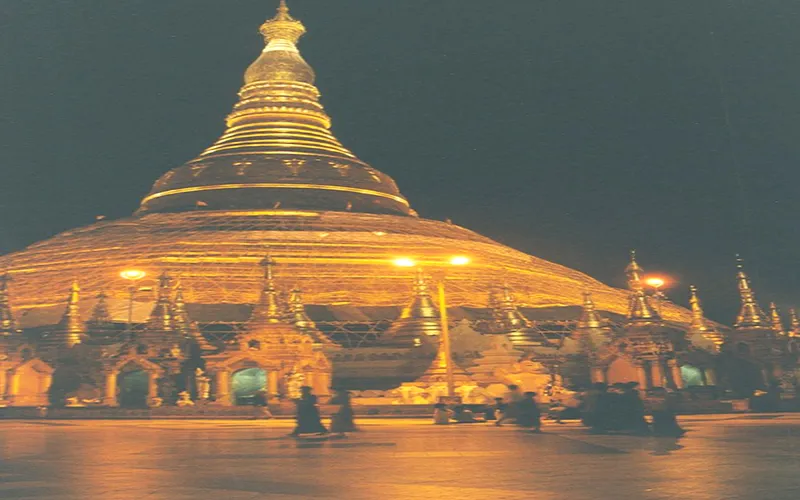-
CENTRES
Progammes & Centres
Location
In Myanmar, the present scenario presents the best opportunity to find resolution to its ethnic issue. Myanmar needs another Panglong agreement if the deep-seated wounds of the decades-long conflicts were to heal and so that the country can move on.

The hope of signing a nationwide ceasefire agreement between the Myanmar government and the ethnic armed groups on the Union Day, 12 February, is unlikely to happen. The date of inking the agreement on this day was proposed by President Thein Sein. It was on this day several decades ago that the historic Panglong Agreement was signed between the Myanmar (then Burma) government and several ethnic minority groups.
When Myanmar was about a year away from independence, then interim government led by General Aung San, father of democracy icon and leader of the opposition party Aung San Suu Kyi, signed an agreement with representatives from ethnic groups of Shan, Kachin and Chin in Panglong in Southern Shan State on 12 February 1947. The agreement accepted full autonomy for the frontier areas and later came to be famously known as the 'Panglong Conference'.
In post-independence period and much before the country came to the limelight in 1988 when the then military regime brutally suppressed a prodemocracy movement, ethnic politics was the defining factor of the country's politics. Ethnic politics in this Southeast Asian nation has largely been in the form of the divide between the majority ruling Burman/Bamar (comprising about over 60 percent of the total population) and the rest--comprising several ethnic minority groups such as Kachin, Mon, Karen, Shan, Chin, etc.
The failure to honour the Panglong agreement by the country's first prime minister U Nu, soon after independence, led to an all out civil war, a war that is continuing even today. For more than six decades, ethnic conflicts have inflicted untold sufferings on the ordinary civilians, affecting every sphere of the country. In fact, the ethnic issue was used as an excuse by the military to take over power in 1962. The military regime lasted till 2010.
Since the quasi-civilian government under President Thein Sein came to power in 2011, new hopes were raised as political transition to democracy was initiated and an opportunity for the country to re-define a new identity for itself opened up. The new government initiated peace negotiations with the ethnic armed groups which came to be known as the Myanmar's Peace Process.
President Thein Sein's government needs to be commended for the progress it has made in the peace process - the recognition of the federal union; achieving separate ceasefire agreements with most of the ethnic armed groups; reduction in clashes between government troops and ethnic armed groups; etc. However, it is also true that offensives continue in ethnic areas. For instance, the offensives against the Kachins have been a reason for the hardening of position of the group not to sign ceasefire.
The key issues that have been negotiated between the representatives of the government and the ethnic groups are on questions around recruitment and control of resources. The government wants the ethnic armed groups to stop recruitment, while the ethnic armed are divided on the issue with some wary of completely stopping their recruitment at a time when clashes are continuing.
The other issue is control and management of resources. The armed ethnic groups want the government to recognise their rights to collect taxes, manage and extract natural resources that they have long been allowed to do in a rather strange arrangement reached between the previous military regime and the armed ethnic groups with the hope of buying some peace.
This year is also an election year, the first after 2010 elections. At one level, the current government would want to achieve some progress with the ethnic groups and may even want to be accommodative to take the success of the peace process as a key plank in its election campaigns. At another level, it is also possible that the government may show less interest in the peace process as it will have to channel its energy in the election.
As the going gets tough, blame game is also setting in -- the first sign of failure in any negotiation. Myanmar army chief recently blamed the ethnic groups for the military offensives and asked if the ethnic groups really wanted peace. Such allegations have been levelled against the Myanmar army by ethnic leaders also. Even as the country struggles to achieve a nationwide ceasefire agreement, there are other parallel political processes -- the most significant being the elite politics. In the initial years soon after the peace negotiations began, there was a sense that the ethnic groups will play a pivotal role with other stakeholders in shaping the country's future.
The key political stakeholders in Myanmar's contemporary politics - the government under President Thein Sein, Opposition leader Aung San Suu Kyi, the Speaker of Lower House Thura Shwe Mann, and the Commander-in-Chief of Defence Services Senior General Min Aung Hlaing - had a high-level meeting in October 2014 without any ethnic representatives. This suggests that the current political elites in Myanmar are prepared to go ahead in deciding the country's future with or without the role of the ethnic minority groups. Not a good sign for the ethnic minority groups as well as for the country.
All stakeholders need to recognise that the success or failure for the peace process have far-reaching consequences. It could adversely impact the larger democratisation and national reconciliation processes and thus the future of the country itself. There is today an opening to end the endless conflicts, but if only all the key stakeholders work together to make it happen.
The present scenario presents the best opportunity to find resolution to the ethnic issue. The signing of the nationwide ceasefire agreement is just another step towards more substantive political dialogue. Even if a nationwide ceasefire agreement could not be signed on 12 February, what is more important is that all key stakeholders need to be prepared to continue the peace process. It may not be this year and it may take a few more years, but Myanmar needs another Panglong agreement if the deep-seated wounds of the decades-long conflicts were to heal and the country needs to move on.
(The writer is a Fellow at Observer Research Foundation, Delhi)
The views expressed above belong to the author(s). ORF research and analyses now available on Telegram! Click here to access our curated content — blogs, longforms and interviews.

K. Yhome was Senior Fellow with ORFs Neighbourhood Regional Studies Initiative. His research interests include Indias regional diplomacy regional and sub-regionalism in South and Southeast ...
Read More +